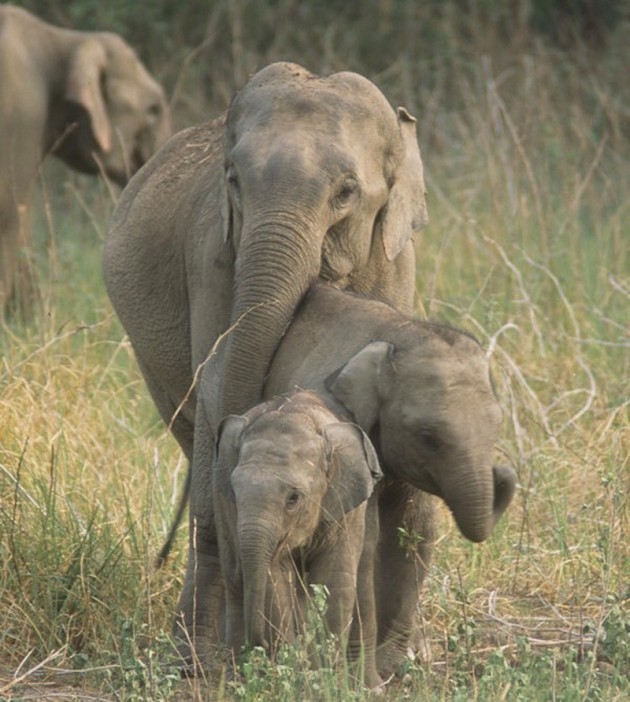Researcher studies elephant habitats

Elephants, rhinos and tigers may seem like creatures from another world to students at USF, but one faculty member devoted three months of his time to help these animals and their cohabiting communities.
Ron Chandler, an environmental scientist and member of the Florida Center for Community Design and Research in the College of the Arts, took a sabbatical to Thailand and India from November to January to help develop communities and, in turn, help better animals’ chances for survival.
The project — funded by the Conservation Initiative for the Asian Elephant (CIFAE) — looked at the needs of the people in India and how their behaviors affect animal habitats.
One area of focus was the development of indigenous farming practices.
“Instead of planting one crop, we encouraged them to plant diversity,” Chandler said.
Recent changes to India’s economic structure have caused many villages to grow only one type of crop, he said. Getting back to a more sustainable culture, as well as bringing in more modern technology, gives people an opportunity for a better way of life.
Amirtharaj Williams, who works for the World Wildlife Fund and founded the CIFAE with Chandler in 2000, said the project helped improve communities in other ways.
“We supported local villagers to go attend a course on how to run homestays for tourists coming to see elephants and other wildlife,” he said. “This is a way we ensure that benefits percolate to the local villagers rather than big businesses that run resorts.”
He said this creates economic opportunity, which in turn helps prevent people from cutting down trees and poaching wildlife.
Williams said field conservationists in Asia contact him with innovative ideas, and he and Chandler reviewed the pitches and decide which ones to fund.
He said the trip to Asia had two goals.
“We wanted to help small grassroots initiatives take wings and help in the conservation of Asian elephants,” he said. “We also wanted to do this for wild Asian elephant populations (and) geographic areas where other nonprofits were not investing — and highlight them to the world as a result.”
Williams said the first goal progressed significantly during the trip, and he hopes to achieve the second and improve grassroots initiatives during the next five years.
“We are also developing a long-term strategic plan for CIFAE to try and remain focused on what needs to be done and how we plan to contribute to the overall effort by all groups in conserving Asian elephants in the wild,” he said.
Chandler said that by 2010, CIFAE will partner with other conservation organizations to hold an Asian elephant conservation forum in Cambodia.
Future efforts, he said, will look at maintaining migration corridors for elephants, whose paths are often blocked by cities and land used for agriculture.
“Elephants maintain survival of tens of thousands of species,” Chandler said. “They protect the biosphere.”
He said about 40,000 Asian elephants still exist in the wild.
Support from locals helped make Chandler and other conservationists’ efforts easier.
“Even though most people barely eke out a living, they really care,” Chandler said.
People don’t willingly harm the animals, he said, and they want to help, but it is hard for them to do it alone.
“More than 70 percent of people live below the poverty line,” Chandler said, adding
that many eat only one meal per day. “The human condition is quite severe.”
He said contrasts between developed and underdeveloped areas in India are “mind-bending” and “problematic.”
“With basic changes of how they manage water, soil and resources, it could improve things considerably,” he said.
Chandler said that though the Indian government has made a lot of progress in protecting animals, the system is fragmented and money is often gone by the time it gets to local officials.
“We’re trying to work from the bottom up — not wait for the government,” he said.
This was Chandler’s first visit to India because of the expense of both the trip and projects that would be implemented there.
“The cost of going is equivalent to doing lots of things for people,” he said. “After eight years, people wanted to meet — it was time to meet face-to-face.”
Chandler said he wanted to work with elephants because he has always loved them and wanted to help them.
He and Williams started CIFAE after communicating through e-mail.
“I gave him some ideas and explained the various issues that threaten elephant survival in the wild in Asia,” Williams said. “It took some time before we could formally give the idea shape. Since I work for the World Wildlife Fund, I explained to Ron that if and when we set up CIFAE, it should try and fill an unfilled niche in efforts to conserve Asian elephants in the wild.”





